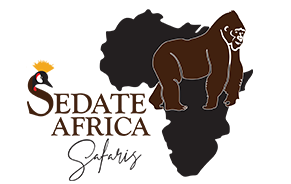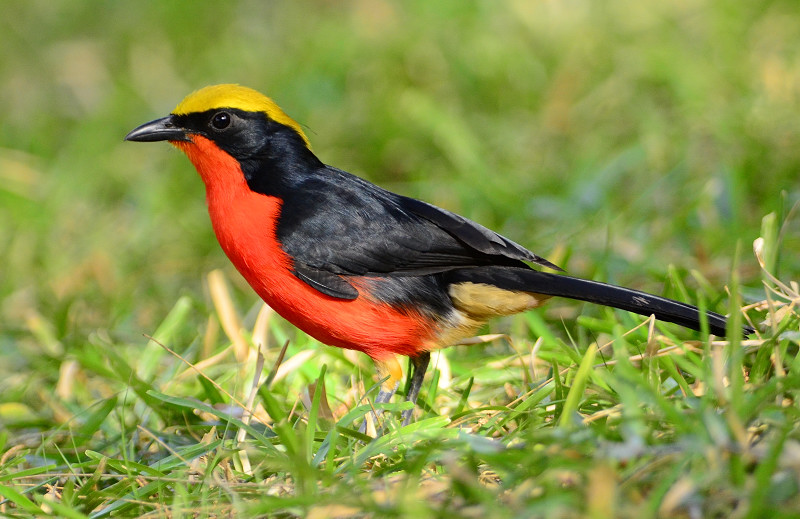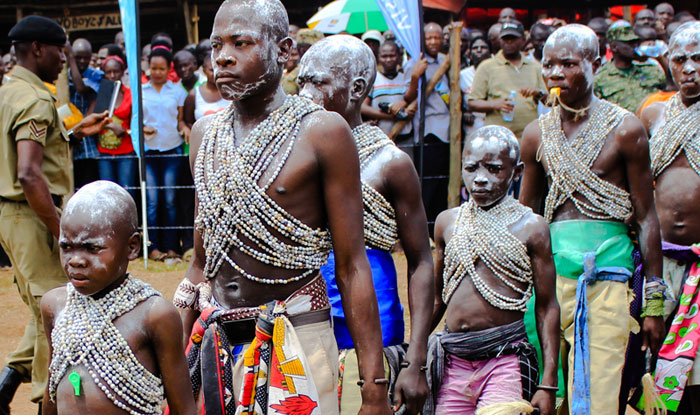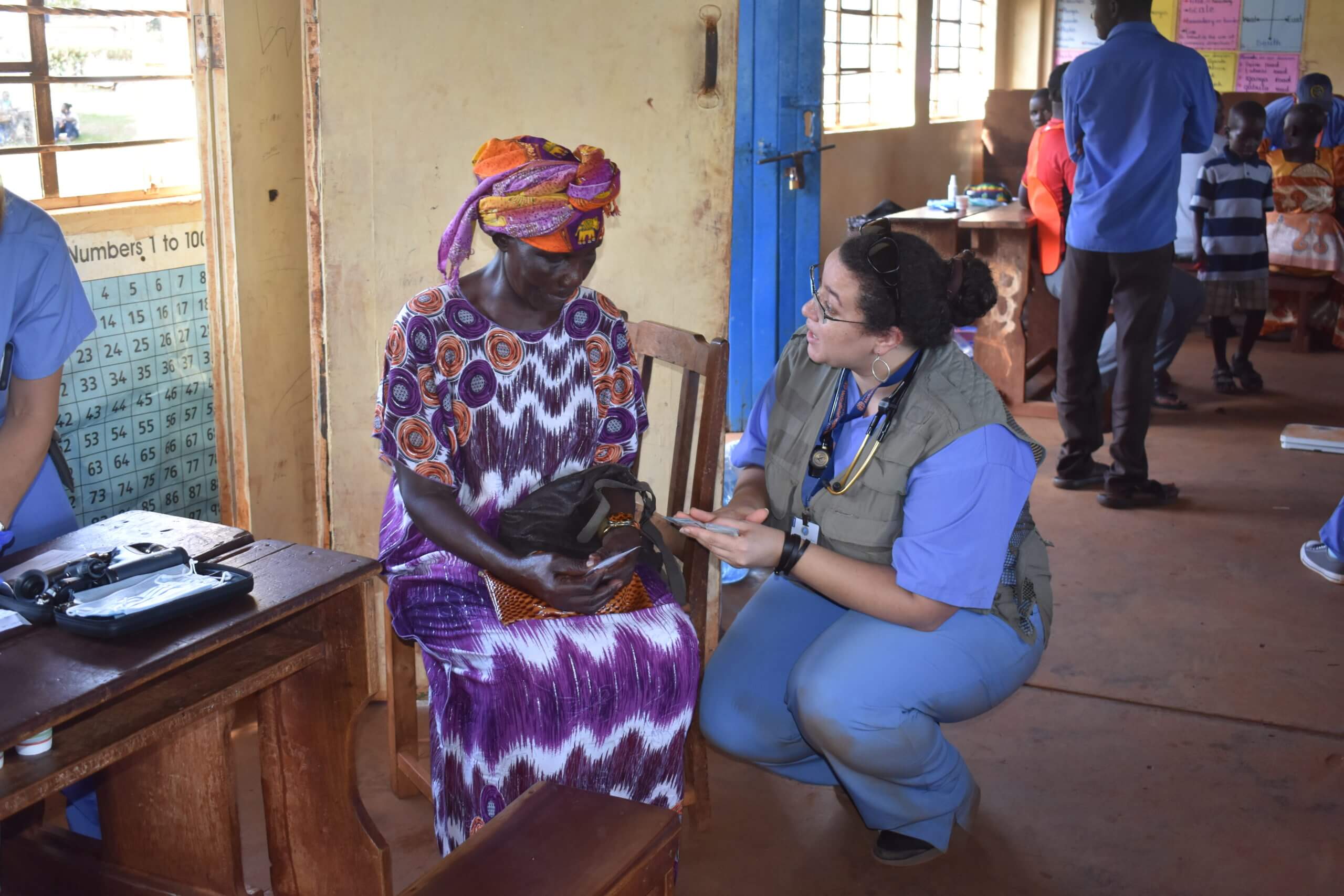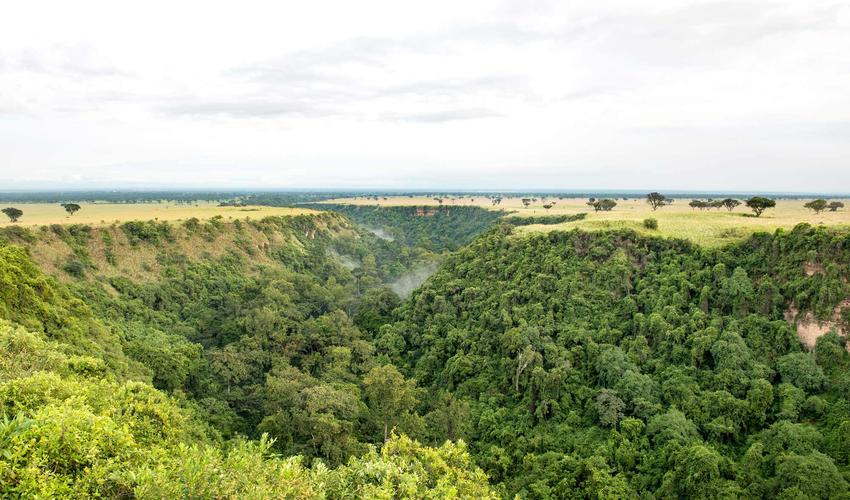This papyrus gonolek appears as a standard-sized bush shrike with a beautiful array of body coloration. Furthermore, a blackhead crowned with a dull yellow plumage. The wings, tail, and upperparts are also black. A black bill and legs and orange-crimson (orange-red) underparts (throat & belly).
The wings also have a white streak a few that cuts across most shrike birds. Visit Uganda for a 15 Days Classic Birding Tour in Uganda to track for the papyrus Gonolek. These water-loving birds range through the wetlands of the Democratic Republic of Congo, Uganda, Tanzania, Burundi, Rwanda, and Kenya.
The strikingly colored skulker is endemic to papyrus swamps of the great lakes region.
Scientific Name of the papyrus Gonolek: laniarius mufumbiri
Classification of the papyrus Gonolek
Kingdom: Animalia
Phylum: Chordata
Class: Aves
Family: Malaconotidae
Genus: Laniarius
Species: Laniarius Mufumbiri
Reproduction of the papyrus Gonolek
The female lays about 2 – 4 blue eggs. These are laid in a nest built in a small bush usually in the reed beds. The eggs are laid preceding the start of the dry season in some destinations. The males perform some unique displays during courtship. The papyrus Gonolek is monogamous and also territorial.
Communication /calls / Patterns of the Yellow Crowned Gonolek
Males make a rhythmic wi-onk wi-onk / chonk – chonk tones and females may add a similar musical chh-t-chh sound which makes their calls quite a beautiful sound.
IUCN Report on the Yellow Crowned Gonolek
The species was recorded as near threatened. However, this is due to habit loss which is evidently seen through the rampant destruction of wetlands around the continent.
Food Habits of the papyrus Gonolek
Their food plan mainly includes insects both large and small. They also eat other invertebrates. They eat grasshoppers, ants, beetles, honey bees, swamp caterpillars, wasps, snails, and earthworms.
Ecosystem roles of the papyrus Gonolek
Regulating invertebrate populations.
Predators that prey on the papyrus Gonolek
The most common predators are reptiles (snakes) and mammals (forest wild cats).
Life Span of the Yellow Crowned Gonolek
They may live longer in captivity. Although in the wild, they may spend about 5 – 6 years or even less. This is because of human interference and the rapidly changing environmental conditions.
Birders seeking to organize unique Birding tours in Uganda should contact our reservations team for inquiries. We pledge to prepare and guide you on a life-changing wildlife safari / tour in any of Uganda’s incredibly endowed Nationals parks. To book a safari or make inquiries, simply send us an email to info@raksafaris.com or call us now on +256-782 061184 to speak with our reservations team.
